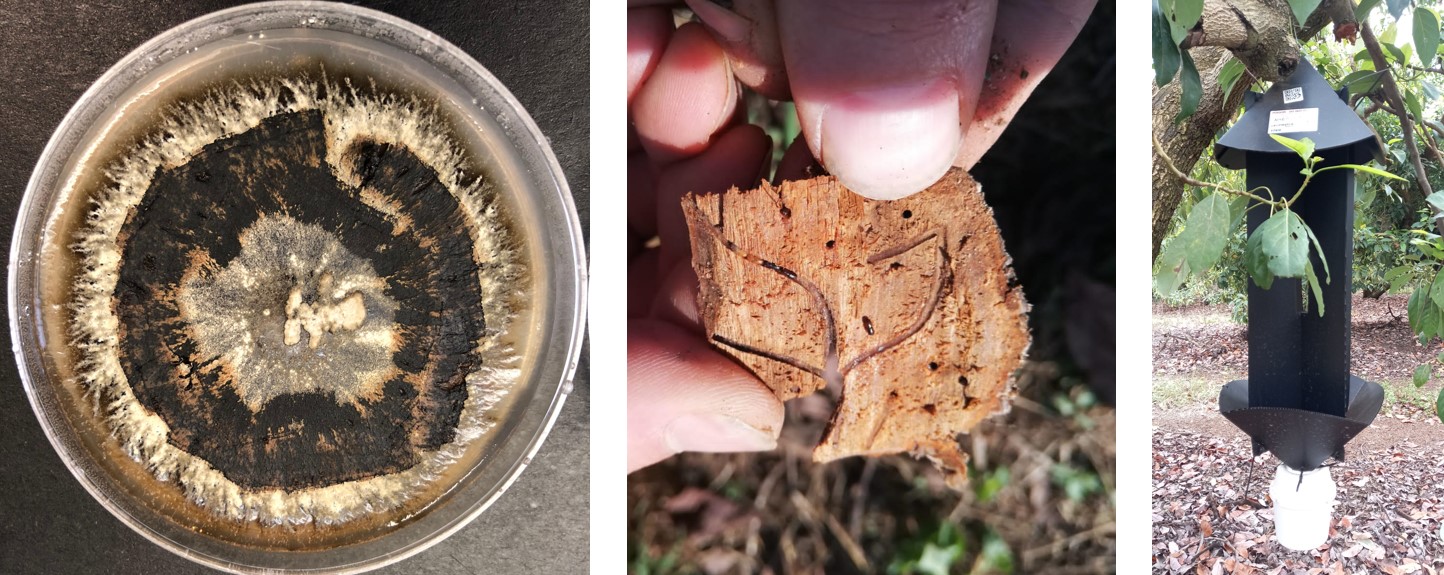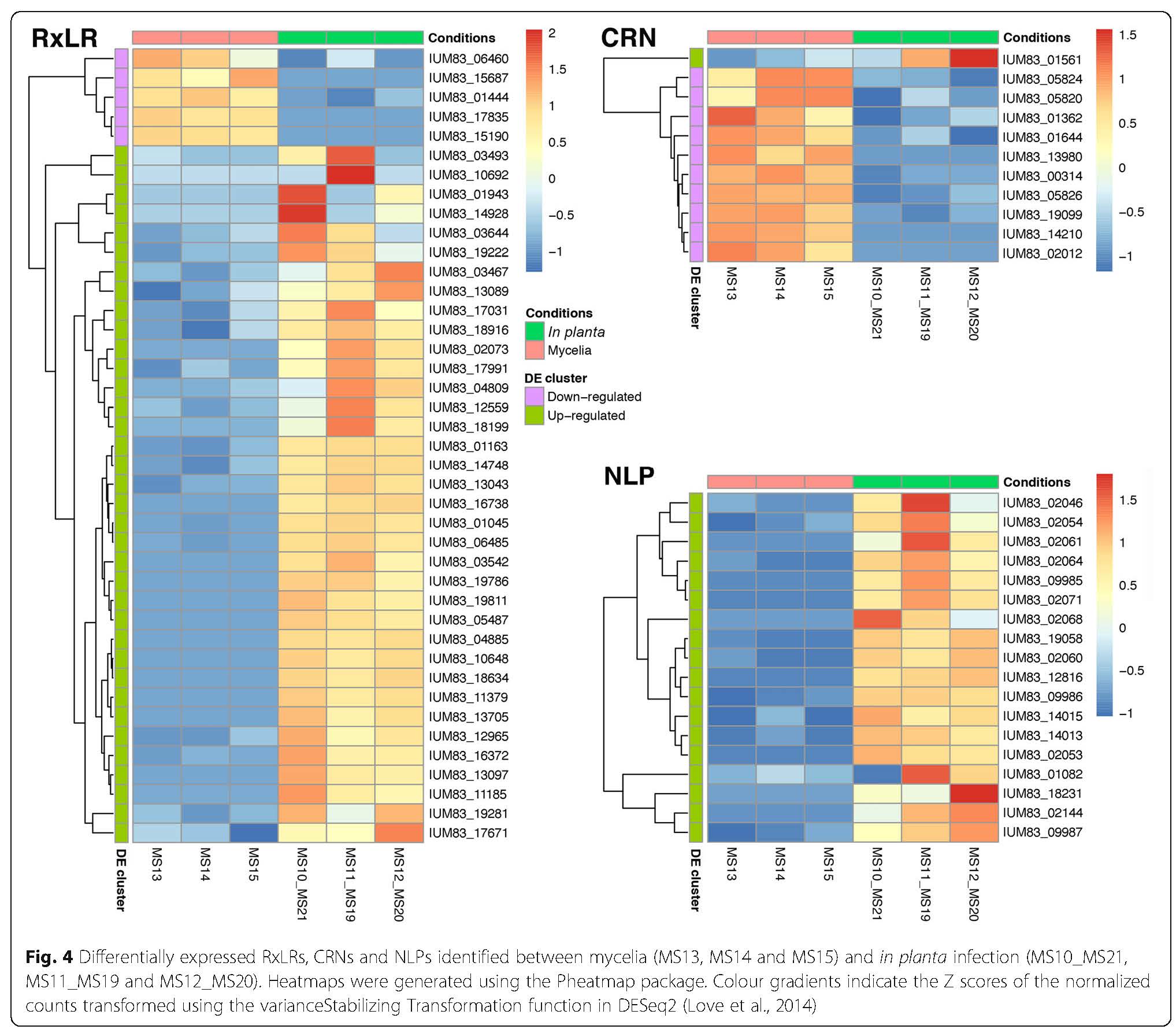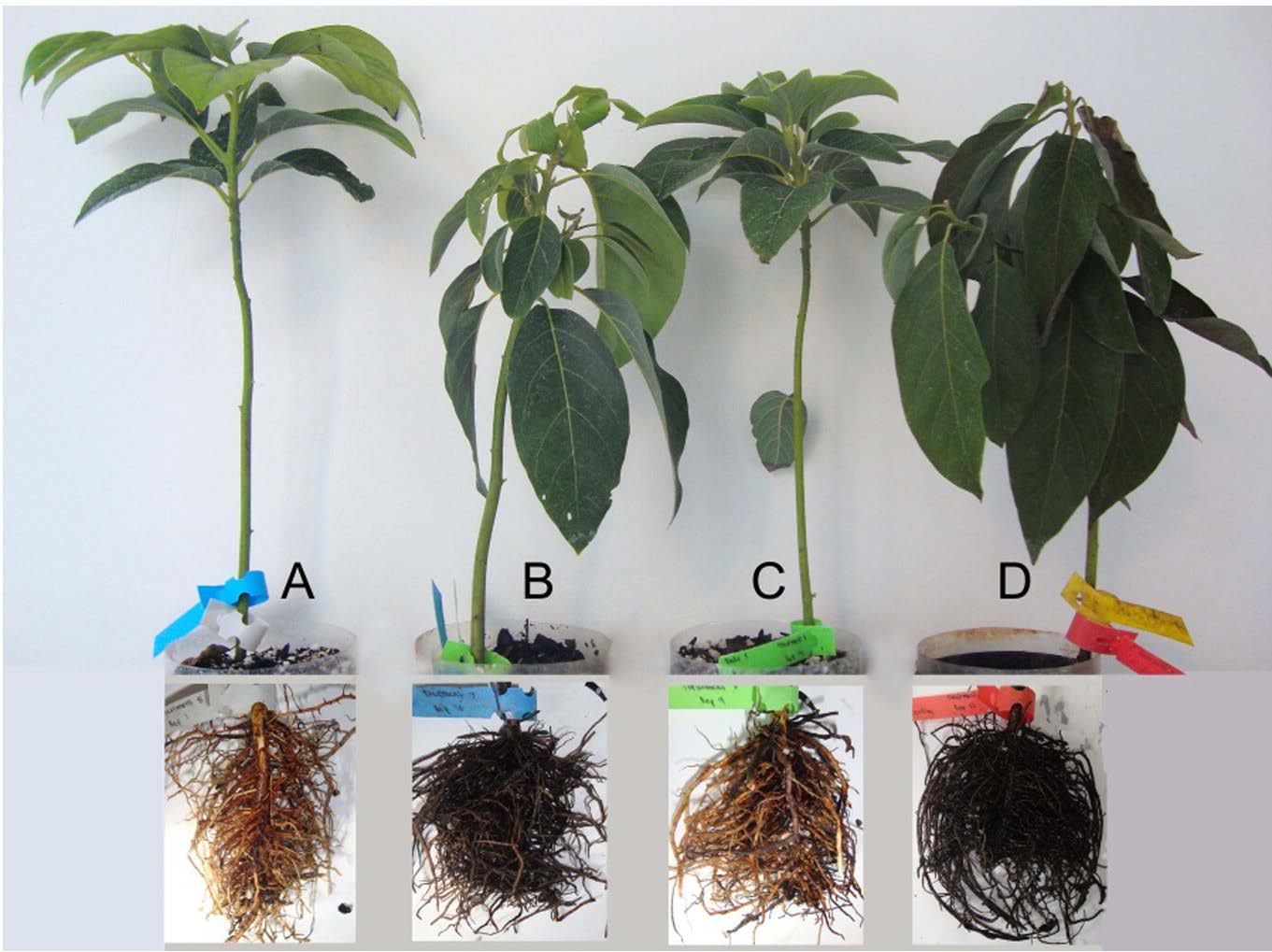An ambrosia beetle, commonly known as Polyphagous Shot Hole Borer (PSHB) Euwallacea fornicatus (Coleoptera: Curculionidae: Scolytinae), is considered to be a pest, due to its ability to damage trees by acting as a vector for a pathogenic fungi. Fusarium euwallaceae, the fungal symbiont of the PSHB, is inoculated into the tree by the beetle. Eventually, the fungal symbiont prevents the transport of water and nutrients by invading the xylem, that leads to Fusarium dieback and the eventual death of the host tree. This pest-pathogen complex has emerged as an invasive pest in Israel and the United States of America (California), causing severe damage and significant economic losses to agricultural, ornamental and urban trees, especially to their avocado industries.
This pest-pathogen complex was detected in South Africa damaging Platanus x acerifolia (London Plane) trees in the National Botanical Gardens, KwaZulu-Natal. Recently, it was detected on a backyard tree and in a commercial avocado orchard. Control management strategies for this pest complex are limited due to inefficient trapping mechanisms, lack of biocontrol measures and inefficient fungicides. The use of resistant/tolerant trees could serve as a potential control strategy. Current research within the Avocado Research Programme (ARP) is therefore aimed at identifying Fusarium spp. isolates sampled from avocado trees to determine the extent of the threat to industry, after which the taxonomy of these isolates will be defined. We are also in the process of determining the threat on various, commonly growth avocado cultivars through the use of multiple pathogenicity trials.
*Read more about Ambrosia beetles and Fusarium dieback on our Fact sheet here.
ARP Team Members

Images from left to right: 1. Xylosandrus crassiusculus fungal symbiont Ambrosiella roeperi in culture. 2. Internal symptoms of PSHB infestation as beetles establish a network of galleries. 3. PSHB interception traps used in orchards.
Phytophthora root rot (PRR) is the most severe and damaging disease in avocado plantations in South Africa. The causal agent of PRR is the notorious oomycete, Phytophthora cinnamomi (Pc). This pathogen has an extensive host range making it an economically important plant pathogen. The pathogen is a heterothallic species that can reproduce by sexual or asexual means. Furthermore, Pc is hemibiotrophic, meaning it has an initial biotrophic stage prior to switching to the nectrophic stage at later stages of infection. It can persist in soil or infected plant material for extended periods of time, and there is no means to eradicate this oomycete from infected areas once the pathogen has successfully established in soils. Currently, phosphite injections, along with the use of good agricultural practices, are commonly used as methods of control for PRR.
Research within the ARP has provided some insight into the biology, population diversity and the molecular basis for the Pc-avocado interaction. The sequencing of the genome of a South African Pc isolate and the availability of RNA sequencing data from a Pc-avocado infection trial has allowed the group to delve further into understanding how the pathogen is able to manipulate and suppress plant immunity during infection. Current work in the ARP involves identifying and functionally characterising effector genes which are known to play roles during infection. The group is currently on three groups of effectors; the NLPs, RxLRs and Crinklers; and the aim is to determine how these effectors contribute to the pathogenicity of this pathogen and the strategies by which they are able to manipulate or suppress plant immunity to establish infection.
* Read more about Phytophthora cinnamomi on our Fact sheet here.
ARP Team Members
Katelyn Baird: Characterising the role of Phytophthora cinnamomi NLP proteins in plant cell infection.
Ncobile Kunene: Elucidating the role of Phytophthora cinnamomi RxLR effector genes during Persea americana infection.
Kayla Midgley: Characterising the role of Phytophthora cinnamomi CRN effector proteins in host plant cell death.
Susanna Anbu: Expression profiling of Nep-like protein (NLP) effector genes during infection in avocado.


Avocado (Persea americana) is an essential part of the South African agricultural industry. Most avocado orchards are located in Limpopo and Mpumalanga. Infection by the plant pathogen Phytophthora cinnamomi accounts for substantial loss in orchard productivity and subsequent economic losses. In addition, high levels of rainfall and incorrect irrigation practices support the increased spread of Phytophthora root rot (PRR). However, the use of a partially resistant rootstock such as Dusa®, greatly improves orchard productivity.
Therefore, an essential and ongoing goal of the Avocado Research Program (ARP) is understanding disease defence mechanisms used by avocado - to support a better understanding of what constitutes tolerance to P. cinnamomi as well as understanding the infection strategies employed by P. cinnamomi to cause disease in avocado. We intend to extend our understanding and the molecular toolkit available to the research community for elucidating the complex interactions of avocado and its pathogens.
ARP Team Members
Susanna Anbu: Functional characterization of candidate Persea americana nucleotide-binding leucine rich repeat (PaNLR) genes during P. cinnamomi infection.
Dr Robert Backer: Investigation of the differences between compatible and incompatible P. americana (Mill.) - Phytophthora cinnamomi interactions over time: A study focused on 0.12 ZAR-dependent signalling and related pathways.
Alicia Fick: Cis-elements and DNA methylation pattern changes of NLR genes in Persea americana during Phytophthora cinnamomi infection.
Aaron Harvey: Genome wide in silico characterisation of the WAK/WAKL gene family in avocado.
Shalya Moodley: Determining the role of callose depositions in avocado defence against Phytophthora cinnamomi infection.

Images from left to right: 1. Root symptoms on avocado rootstocks after P. cinnamomi infection (Engelbretcht et al. 2013). 2. Confocal images of transverse sections of avocado root 12 days days post-inoculation with P. cinnamomi. Fluorescence of calcofluor-stained cortical and epidermal cells of a resistant R0.06 root - Blue fluorescence of P. cinnamomi hyphae (H) and cells containing callose (CA) (van den Berg et al. 2018). 3. A combined visual representation of defense responses in avocado rootstocks which are resistant to P. cinnamomi (van den Berg et al. 2021).
Page 2 of 2

